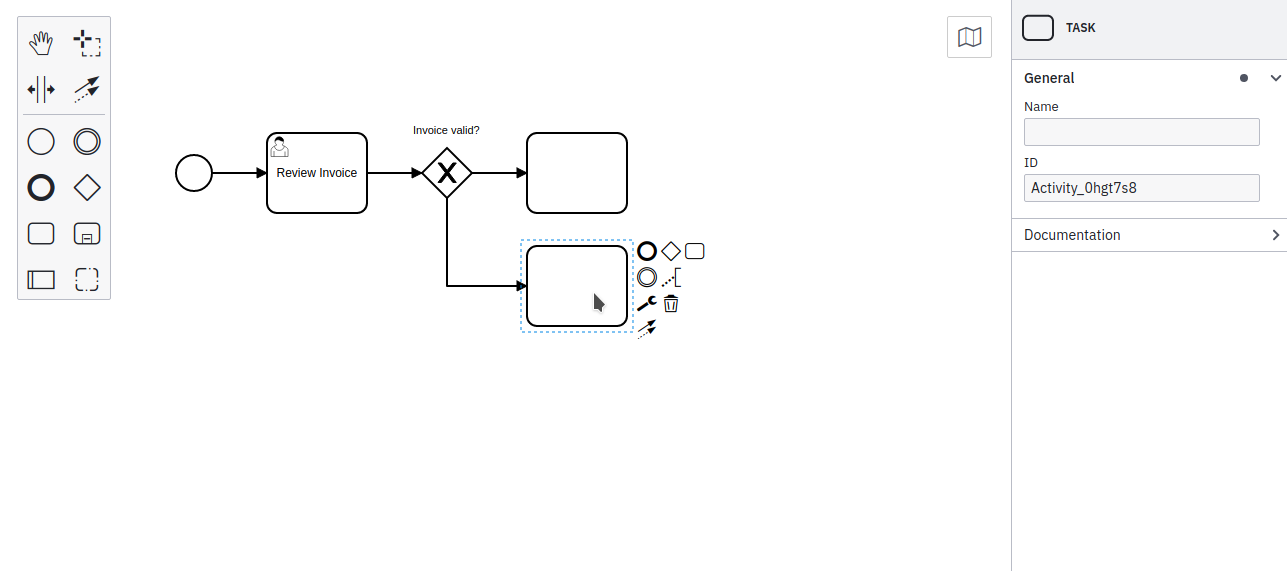BPMN in Modeler
Business Process Model and Notation (BPMN) was developed as a graphical notation to represent complex processes. It is maintained by the non-profit The Object Management Group (OMG) and employed by numerous organizations globally. The visual nature of BPMN enables greater collaboration between different teams, particularly within Modeler.
BPMN diagrams must be created for the process engine they intend to be deployed on. You cannot run a BPMN diagram modeled for Camunda 7 in Camunda 8, or vice versa, at this time.
Start modeling

Web and Desktop Modeler both offer a similar core BPMN 2.0 Modeling experience:
- Add BPMN elements from the palette on the left side of the page by dragging and dropping them onto the diagram canvas.
- Change the type of element in place by clicking on an element to reveal the context menu. Then, select the Change element menu icon to change the type of element to a service task or user task, for example.
Creating BPMN elements
Using BPMN in Modeler, you can create more BPMN 2.0 elements like task types and event definitions.
For example, service tasks within Camunda 8 require you to set a task type and implement job workers to perform a particular task in a process.
Review the BPMN 2.0 coverage documentation for a complete list of BPMN elements supported by our modeling tools.
Additionally, visit creating readable process models for general guidelines on modeling with BPMN.
BPMN 2.0 properties for execution

In the properties panel on the right side, view and edit attributes that apply to the selected element.